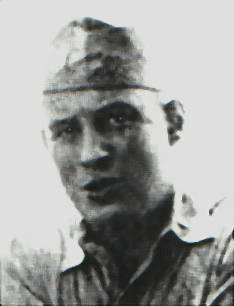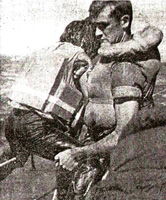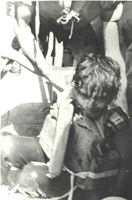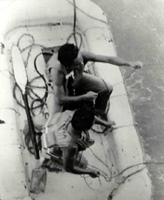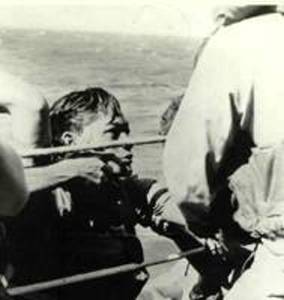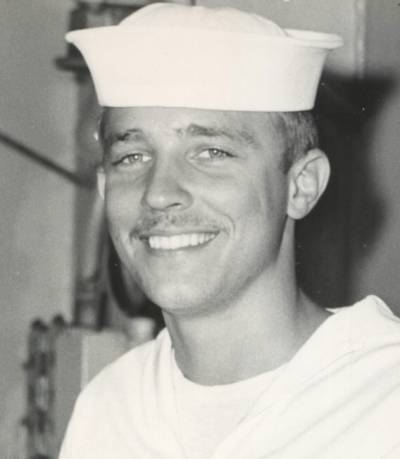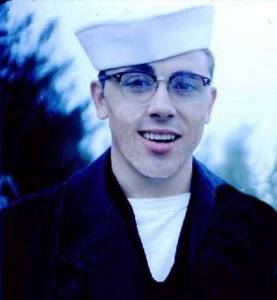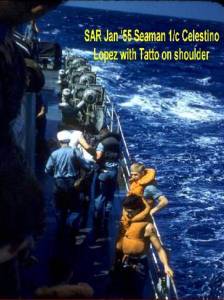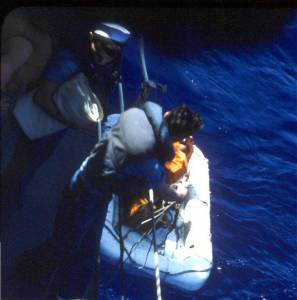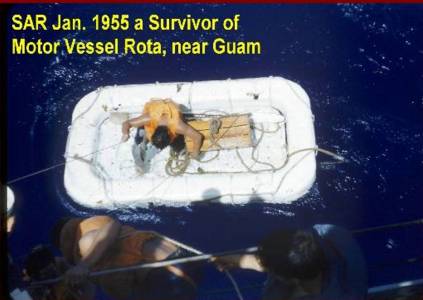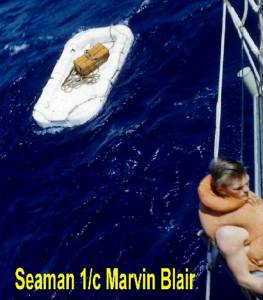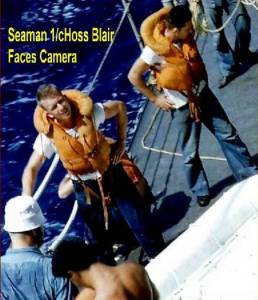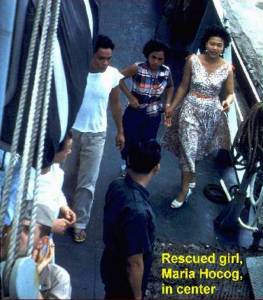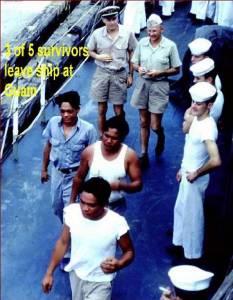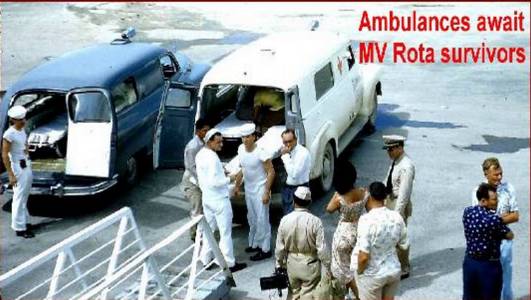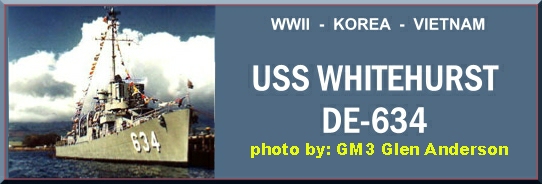
USS Whitehurst Logo by: Pat Stephens, Webmaster, DESA
|
Signal SAR... Search and Rescue |
|
|
Eight were lost in that storm-smashed sea, and our ship was their only hope |
|
|
Written in 1955 by Ensign Louis Strazis USNR and Published in REAL Magazine |
|
|
|
|
|
The call for help came into the Guam Naval Base at 1420 last January 14. A tiny, 48 foot civilian motor boat was long over due on a voyage from the nearby island of Rota.
A raging storm was whipping across the South Pacific Ocean. The small craft hadn't been heard from for hours. Somewhere between the two Islands she was lost, possibly sunk.
The Navy went into action. Orders were out in minutes. At 1430 our ship, the destroyer escort USS Whitehurst, lying in Guam's Apra Harbor, got her signal, fired her boilers and prepared to head to sea. Our job: Find the
survivors, if any.
By 1506, the last man of the crew had scrambled aboard the Whitehurst and, 29 minutes later, our skipper, Lt. Cmdr.W. R. Easton of San Diego, took her past the sheltered harbor's last
buoy and we churned into the turbulent open sea.
Search and rescue (SAR) missions were nothing new to us aboard the Whitehurst. We'd been on plenty of them before. But we didn't think of an SAR as just another of the dirty little jobs that usually fall to the destroyer escort. To us, it was a job we were extra proud to do.
The wind whipped furiously across the DE's decks as the storm picked up tempo. Heavy seas crashed relentlessly against her bow, flooding the weather decks with foaming white ocean water. Misty sheets of salt spray engulfed the soaked lookouts on the bridge, as the vessel knifed her way through the roaring waves.
In the Combat Information Center (CIC)-search headquarters of the ship-the men braced themselves and clung to the radar equipment, the fathometer, dead reckoning tracer, or whatever else was handy. There was an almost constant stream of men stopping in CIC to check the search plot. Heads would stick in thru the hatch, "Got anything yet?" "Not Yet". Our nervous radar man saw a dozen contacts on the sea return and then watched in dismay as they faded on the third sweep of the beam. The clinometer in the pilot house danced a merry arc-35, 40, 45 degrees at times-as the ship rolled and pitched with a violence that left our stomachs hanging in mid-air. It was like a maddening carnival ride that threw men out of their bunks, popped open drawers, and sent equipment skittering across the deck. The Whitehurst's wardrooms and mess decks were a shambles of smashed china as meals were flung in all directions. Trying to eat or sleep just resulted in bruises and bumps. Up on the bridge, we took turns wiping salt from our binoculars and squinting out over the dismal gray expanse. Horizon blended with water and fog. All around, it was the same. A driving rain peppered our faces, trickled down our slickers, and streamed off onto the slippery plating. We peered through the binoculars until our eyes burned like red hot marbles. Our bones ached from being buffeted unmercifully by the rolling of the ship. Our cracked lips stung from the salt that became encrusted on them. But not once did we take our eyes from the stormy sea. Somewhere out there people were in trouble. We were their only hope for safety. The vigil continued. It was the same all day and all night. As darkness came, the planes that had been helping in the SAR mission, returned to Agana Naval Air Station. There was little more that they could do until daybreak. We were left searching alone. The radio was our one and only tie to the outside. We used it only to receive the terse instructions from the search headquarters at Guam. Facts were sketchy at first. The lost vessel was the M/B Rota with eight persons and a load of produce aboard. She had been bound for Guam from Rota. The planes returned at dawn. The storm had died down a little, but the white capping waves and swells kept their pace. The seas were a deep blue under a blistering hot sun. Faces became reddened in the glare. Tempers were getting short. We started to speculate on how long the survivors, if any, could last. "Is there still a chance?" we asked each other. "There's always a chance" was the usual answer. There wasn't even a comforting cup of coffee in the wardroom. All the cups lay on the deck, smashed to bits. But it didn't matter too much. The coffee urn had gone adrift and joined them.
On the bridge Sonar man Second Class Raymond Kuester of Sioux City, Iowa, watched wave after thundering wave roll by.
Suddenly he stiffened. Something was bobbing on the choppy surface. Quickly he brought the glasses back a few inches and peered hard.
There it was! It looked like a piece of wreckage. Then he spotted more. Pieces of wood, sacks of green peppers, and empty life jackets.
"Wreckage ahead!" he shouted waving toward the spot. |
|
|
Rescue photos by Ens. Louis Strazis |
|
|
|
|
|
|
|
|
Francisco Manglona and Jose M. San Nicolas toss a line to sailors on the Whitehurst. |
|
|
|
|
|
|
|
|
The Following Color photos were taken and contributed by Dave Schaefer YN3 |
|
|
|
|
|
|
|
|
|
|
|
|
|
|
|
|
|
|
|
|
|
|
This story was well
covered in the |
|
On 2 November 2000, I received the following e-mail from Mr. Efrain Hocog.
My name is Efrain Hocog and I'm the son of the island woman that was rescued from a shipwreck in 1955. I just want to give my thanks to the whole crew at the time and if not for them, our existence will not be possible. Thank you. |
|
His second e-mail is in reply to my query about his mother. mc
Yes sir my mother is Maria, and she is alive and well. She has four sons and I am the oldest. She is still in Rota and I know in her heart she'll be eternally grateful. I specifically like to thank Ens. Strazis for publishing it. As usual since this is a military effort there are too numerous people to mention and again, from the son of a survivor, many thanks to the crew of the USS Whitehurst, then and now. From one warrior to another, "I SALUTE
YOU". I've just recently retired from the U.S. Army as a Paratrooper, Airborne....
Efrain Hocog |
WWII
Era | Korea War &
'50s | Viet Nam & 60s |
Reunions |
Search & Rescue
Poetry |
Enemy Below |
Taps List |
Photos/Armament |
History |
Crews Index |
Home
